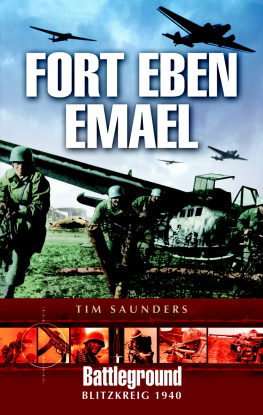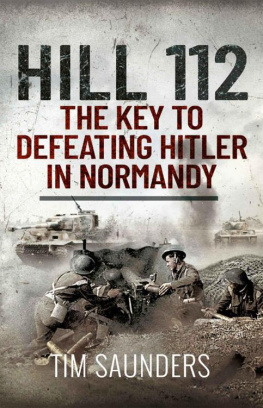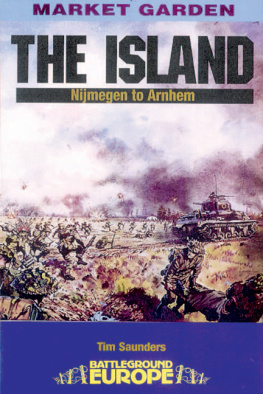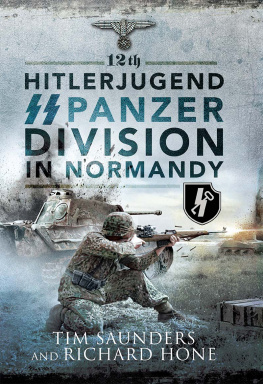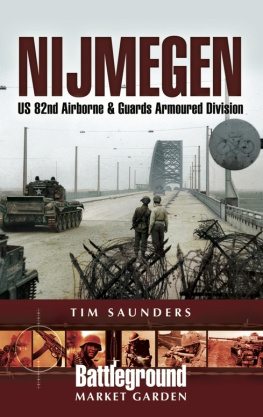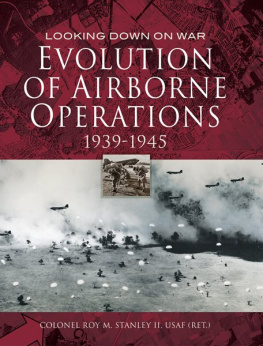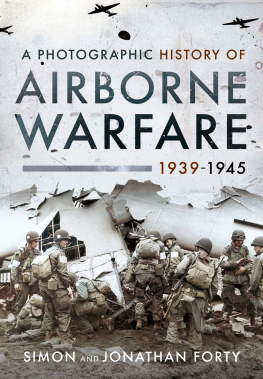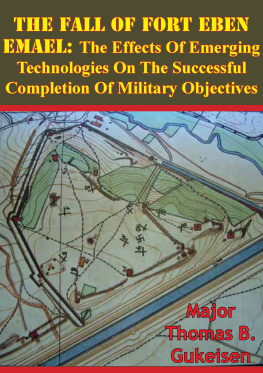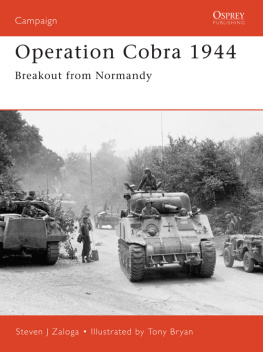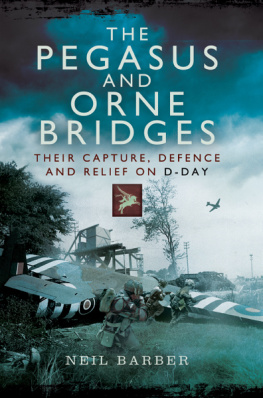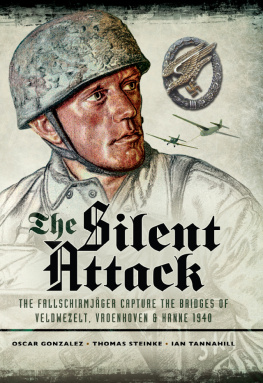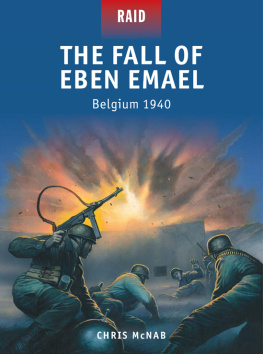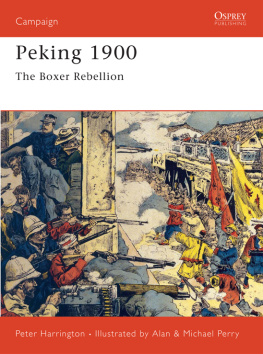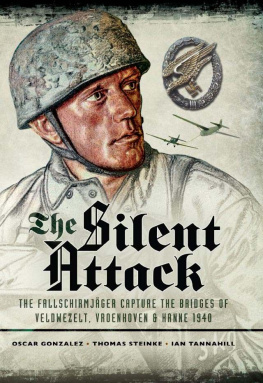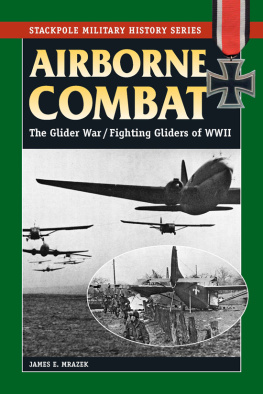Tim Saunders - Fort Eben Emael
Here you can read online Tim Saunders - Fort Eben Emael full text of the book (entire story) in english for free. Download pdf and epub, get meaning, cover and reviews about this ebook. year: 2005, publisher: Pen and Sword Military, genre: Science fiction. Description of the work, (preface) as well as reviews are available. Best literature library LitArk.com created for fans of good reading and offers a wide selection of genres:
Romance novel
Science fiction
Adventure
Detective
Science
History
Home and family
Prose
Art
Politics
Computer
Non-fiction
Religion
Business
Children
Humor
Choose a favorite category and find really read worthwhile books. Enjoy immersion in the world of imagination, feel the emotions of the characters or learn something new for yourself, make an fascinating discovery.
- Book:Fort Eben Emael
- Author:
- Publisher:Pen and Sword Military
- Genre:
- Year:2005
- Rating:3 / 5
- Favourites:Add to favourites
- Your mark:
- 60
- 1
- 2
- 3
- 4
- 5
Fort Eben Emael: summary, description and annotation
We offer to read an annotation, description, summary or preface (depends on what the author of the book "Fort Eben Emael" wrote himself). If you haven't found the necessary information about the book — write in the comments, we will try to find it.
Fort Eben Emael — read online for free the complete book (whole text) full work
Below is the text of the book, divided by pages. System saving the place of the last page read, allows you to conveniently read the book "Fort Eben Emael" online for free, without having to search again every time where you left off. Put a bookmark, and you can go to the page where you finished reading at any time.
Font size:
Interval:
Bookmark:

My principal acknowledgement is to the outstanding English speaking guides who have conducted me around Fort Eben Emael on numerous occasions over the years and who have answered my many detailed questions. In the early days of my interest in the fort, the guides were invariably Belgian Army soldiers but now serving and ex-members still work at the fort in a voluntary capacity. They provide a soldiers insight that is often missing from written accounts and I unreservedly thank them for sharing their knowledge.
Eben Emael is still Belgian military property and has recently become one of three military memorial sites but the fort is what it is today, thanks to the Friends of Eben Emael (asbl). Their dedication, enthusiasm and work to restore the fort gives it an exciting future; their work in opening galleries and producing displays for visitors is a fine example to those of us who have an interest in twentieth century military history. The fort holds working weekends, when the Friends appeal for volunteers to help restore parts of the defences. In recent years members of the British Parachute Regiment have worked on the fort which all airborne soldiers see as an important part of their collective heritage. If a weekends hard labour is not to taste, perhaps a donation or even sponsorship could be considered.
I would also like to thank researchers in Belgium, Germany and the United States who have located original reports, maps and photographs in their respective national archives on my behalf and to Liz Fox of Bruge, who did much of the detailed translation when my schoolboy French failed me. I would also like to thank individuals and public bodies that supplied some of the more interesting German photographs of the fort. Finally, I would like to acknowledge the work of fellow soldier Thomas Mouat, whose work on Belgian fortresses, Eben Emael and the issue of the hollow charges in particular, has been a constant reality check on history and legend exemplified by over inflated claims made in some accounts.
A visit to Fort Eben Emael and the surrounding 10 May 1940 battle area is extremely worthwhile and will take up most of a day. To fully appreciate the significance of Eben Emaels place in Belgiums 1940 defensive plans, visitors should first take a look at the Albert Canal and later ensure that they visit Bloc 01 on the forts upper surface, where the tactical importance of the fort can be fully appreciated.
While approaching Eben Emael, keep a look out for a wooded conical hill and nearby industrial chimney. This landmark is St Peters Hill on the Dutch side of the Albert Canal. Fort Eben Emael is a short way to the south.
To reach the fort from the west take Junction 32 off the E313/A13 onto the N79 towards Maastricht. On reaching Riemst turn right, taking the N671. Alternatively, continue on the N79 (3 miles) to the Vroenhoven Bridge to view the Albert Canal.
From the east i.e. the Maastricht ring road, take the N79 signed for Tongeren. Cross the Albert Canal at Vroenhoven and in Riemst, turn left onto the N671.
Follow the Eben Emael road signs onto the N619 at the roundabout. Drive through the village of Eben to Eben Emael. Pass the church and look out for signs to the fort on the right (Rue du Garage) and park.
The fort, the upper surface and the ground alongside, remains the property of the Belgian Army who, for many years, used it for a variety of training functions but since 1998 the fort has been administered by the Association Fort Eben Emael (asbl). However, the Belgian Defence Ministry is now actively maintaining exterior parts of the fort as a military monument.
The fort is regularly open at weekends to the public, monthly from March to November. During these weekends, visitors can both enter the fort and explore the superstructure. Details of public open days, hours and entry fees can be found at http://www.fort-eben-emael.be . There is normally a tour in English around mid-day but contacting the fort is recommended. Booking visits to Eben Emael at other times can be made (see website for details), however, this facility is normally only available to groups or larger private tours.
For obvious safety reasons, tours of the forts labyrinthine galleries are conducted by volunteer Belgian guides. However, the order in which the forts internal features are described in Chapter 2 is approximately in line with the normal tour route, although, as access to additional areas of the fort is opened, the route taken is becoming more variable. It is worth following progress underground by using the map on page 34. Please note the following advice, issued by the asbl:
- It is not possible to visit the whole fort.
- A visit to the interior of Cupola 120 can NOT be guaranteed.
- A visit to the Command Posts complex is an alternative to CU 120.
- The tour in the interior of the fort covers just under a mile.
- Visitors with heart problems or other health considerations, should think twice before considering a visit to the upper galleries! The tour involves climbing several long staircases. However, a visit to the barracks is confined to the lower level and is safe for most.
- Those who suffer from claustrophobia are also not encouraged to visit the upper galleries.
- The temperature in the fort is approximately 11 degrees Celsius, therefore visitors should always wear warm clothes and comfortable shoes.
- Remember, the fort was built for the military, not for civilians: for the safety of the group and yourself follow the guides instructions at all times during your visit.
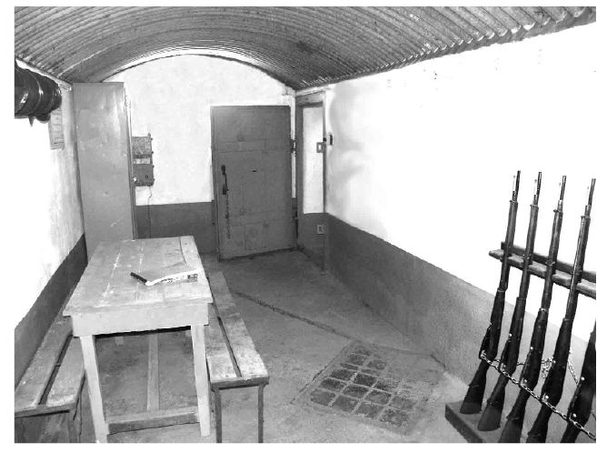
The Guardroom Bloc I.
- Smoking is not allowed in the galleries of the fort.
- Mobile telephones do not work inside the fort.
- Do not leave the group to wander: you could end up being confined in the fort in total darkness!
- Do not take items from the fort: as military property, the fort is within the jurisdiction of the Belgian military police!
A tour of the fort, including a stop in the Caf, the forts former kitchen, normally takes 2-3 hours and normally includes:
- The machinery-room (generators)
- The Commanders office
- The guardroom cell (signed Cachots or Cells)
- The officers mess
- The infirmary
- Officers, SNCOs and soldiers barrack room
- The ventilation system
- A display with German uniforms
- The room of remembrance
- V1 display
- The ablutions
The tour of the forts interior gives the visitor a particularly strong Belgian perspective of what it was like to live and fight in Eben Emael during early May 1940. To complete the story, a visit to the upper surface is a must. From here the problems facing Leutnant Witzig and his fallschirmjger can be fully appreciated along with the dramatic views from Bloc 01 to the east, which demonstrate the forts pivotal role in the defence of this part of Belgium. The major difference between 1940 and today is that there are many more trees and bushes on the slopes and in the moat surrounding much of the fort. The hanger building on the upper surface has gone and the football field is now used for growing crops.
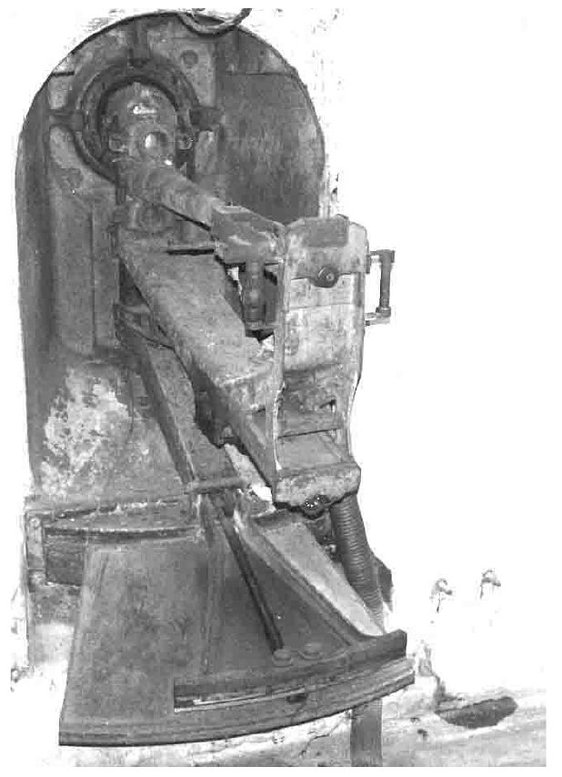
Font size:
Interval:
Bookmark:
Similar books «Fort Eben Emael»
Look at similar books to Fort Eben Emael. We have selected literature similar in name and meaning in the hope of providing readers with more options to find new, interesting, not yet read works.
Discussion, reviews of the book Fort Eben Emael and just readers' own opinions. Leave your comments, write what you think about the work, its meaning or the main characters. Specify what exactly you liked and what you didn't like, and why you think so.

